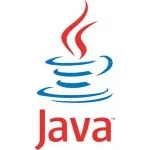A Practical Guide to Using GraalVM to Improve Java Application Performance
As Java applications grow in complexity, achieving optimal performance becomes a critical challenge. GraalVM, a high-performance runtime for Java and other JVM-based languages, offers powerful tools to enhance application performance, including faster startup times and reduced memory consumption. This guide explores how to effectively leverage GraalVM to optimize your Java applications.
1. What is GraalVM?
GraalVM is a versatile virtual machine designed to enhance the performance of JVM-based applications. It supports:
- Ahead-of-Time (AOT) Compilation for native image generation.
- Polyglot Programming, enabling seamless integration of languages like JavaScript, Python, Ruby, and R.
- Improved Just-in-Time (JIT) Compilation for better runtime optimization.
GraalVM is particularly valuable for microservices and serverless architectures, where startup time and memory footprint are critical factors.
2. Key Benefits of GraalVM
- Faster Startup Times
GraalVM’s native image feature pre-compiles Java applications into native executables, eliminating the need for JVM warm-up. - Reduced Memory Footprint
Native images consume significantly less memory compared to standard JVM applications. - Enhanced Performance
GraalVM’s advanced JIT compiler provides better runtime performance through aggressive optimizations. - Polyglot Capabilities
Developers can run multiple languages in the same runtime, fostering interoperability.
3. How GraalVM Improves Performance
1. Native Image Compilation
GraalVM’s Native Image tool compiles Java bytecode into a standalone executable, enabling:
- Instant startup: Ideal for serverless applications.
- Lower resource usage: Reduced memory and CPU consumption.
Example: A REST API built with GraalVM Native Image starts in milliseconds, compared to seconds with a traditional JVM.
2. Advanced JIT Compiler
GraalVM’s JIT compiler outperforms the standard JVM HotSpot compiler by optimizing frequently executed code paths more aggressively.
3. Elimination of Warm-Up Time
Unlike traditional JVMs, which require time to optimize code during execution, GraalVM native images run at full speed immediately.
4. Setting Up GraalVM
- Download and Install GraalVM
Visit the GraalVM Downloads page and install the version matching your JDK version. - Configure Your Environment
Set theGRAALVM_HOMEenvironment variable and add it to yourPATH. - Install the Native Image Tool
Use GraalVM’s package manager:
1 | gu install native-image |
5. Building a Native Image
- Prepare Your Java Application
Ensure your application is compatible with native image generation. Frameworks like Micronaut, Quarkus, and Spring Boot offer native image support. - Compile to a Native Image
Run thenative-imagecommand:
1 | native-image -jar my-application.jar |
3. Run the Native Executable
Execute the generated binary:
1 | ./my-application |
Example
A basic Micronaut application can compile to a native image with:
1 2 | ./gradlew assemblenative-image -jar build/libs/my-app-0.1-all.jar |
6. Performance Comparison: GraalVM vs. Traditional JVM
| Feature | Traditional JVM | GraalVM (Native Image) |
|---|---|---|
| Startup Time | Seconds | Milliseconds |
| Memory Consumption | Higher | Lower |
| Performance | Optimized after warm-up | Immediate optimization |
7. Real-World Use Cases for GraalVM
- Serverless Computing
Native images are ideal for serverless platforms like AWS Lambda, where startup time directly affects costs and user experience. - Microservices Architecture
Applications with numerous microservices benefit from reduced resource usage, enabling higher density on cloud instances. - Command-Line Tools
CLI tools built with GraalVM are faster and lighter than traditional JVM-based counterparts.
8. Challenges and Considerations
- Compatibility Issues
Not all Java libraries and frameworks are fully compatible with GraalVM’s native image tool. Reflection and dynamic proxies often require manual configuration. - Build Time Overhead
Native image generation can take significantly longer than traditional JAR compilation. - Debugging Complexity
Debugging native images is more challenging compared to JVM-based applications.
9. Best Practices for Using GraalVM
- Choose Compatible Frameworks
Use frameworks like Micronaut, Quarkus, or Spring Native that are designed for GraalVM. - Minimize Reflection
Avoid or configure reflection-heavy libraries to ensure compatibility with native images. - Leverage GraalVM Community Tools
Use tools like GraalVM Dashboard to analyze and optimize your application for native image generation.
10. Conclusion: Unlocking Java’s Full Potential with GraalVM
GraalVM is a game-changer for Java developers seeking to improve application performance. By leveraging native images, advanced JIT compilation, and polyglot capabilities, GraalVM enables faster startup times, reduced memory consumption, and unparalleled flexibility. While it comes with challenges, adopting GraalVM is a strategic move for modern Java applications, particularly in cloud-native and microservices environments.


